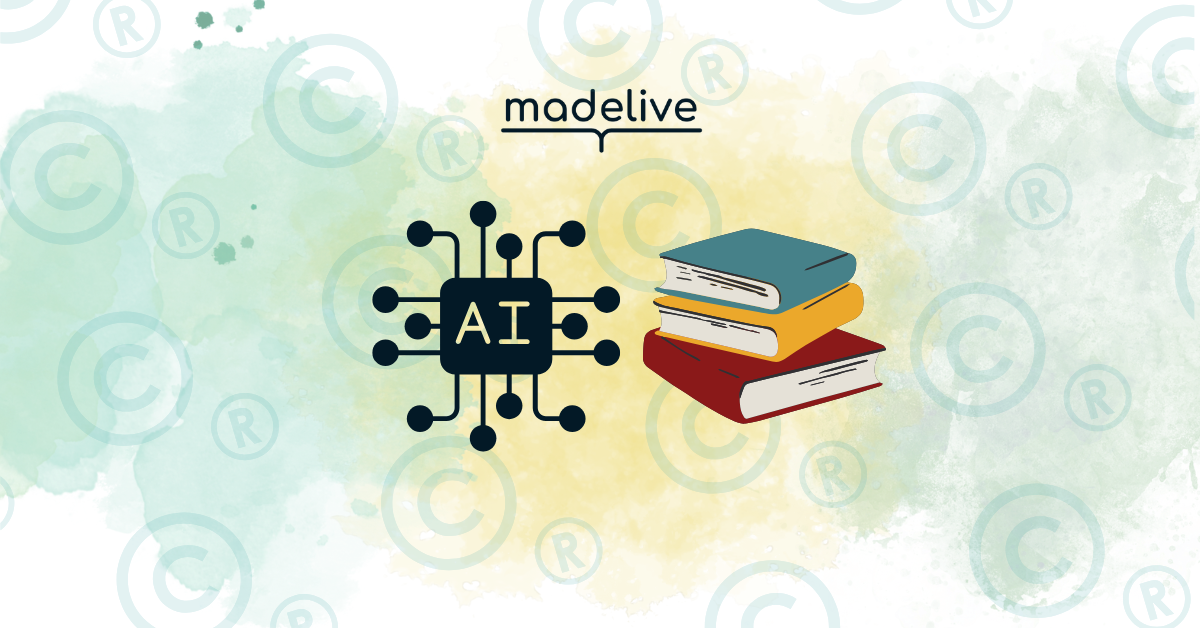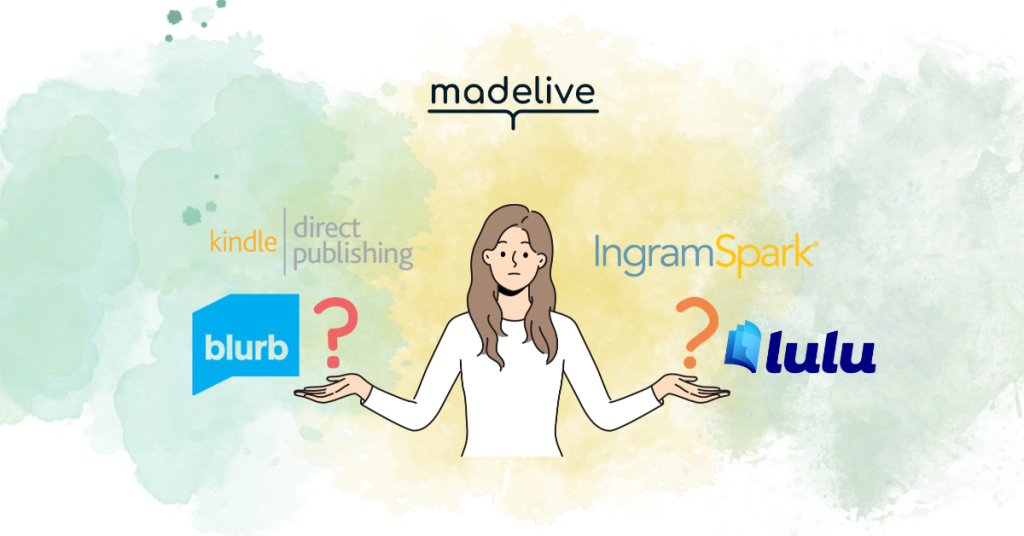If you’re creating children’s picture books and wondering about AI tools, you’re not alone.
The questions keep coming:
- Can I use AI to brainstorm ideas?
- What happens if someone trains AI on my published book?
- Do I need to tell my publisher if I used AI assistance?
Good news: we now have much clearer answers. In May 2025, the U.S. Copyright Office released comprehensive new guidance about AI and copyright, building on the Authors Guild’s practical recommendations from 2024. Together, these resources provide the roadmap aspiring picture book authors have been waiting for.
Here’s what you need to know, in plain English.
Table of contents
The Simple Truth About AI and Your Creative Process
The Copyright Office’s new report confirms what many creators suspected: there’s a big difference between using AI as a helpful tool and having AI create your content for you.
The Basic Rule: You can use AI to assist your creative process, but any text that AI actually generates needs to be disclosed and won’t be protected by copyright.
Think of it like this: if you use a calculator to help with math, you still did the math. But if the calculator solves the entire problem for you, that’s different. The same logic applies to AI in creative work.
What This Means for Your Picture Books:
- Your original ideas, characters, and stories remain fully yours
- AI-assisted brainstorming and research don’t change your copyright
- Any actual text written by AI needs special handling
- Human creativity is still the most valuable asset in children’s publishing
What You Must Disclose (And What You Don’t)
One of the biggest sources of confusion has been when to disclose AI use. The Authors Guild and Copyright Office have now provided clear guidance.
You DON’T Need to Disclose:
- Using AI for brainstorming story ideas
- Research assistance (like learning about dinosaurs for your story)
- Grammar checking and spell checking
- Getting suggestions for character names or plot directions
- Using AI to help organize your thoughts
You DO Need to Disclose:
- Text that AI wrote and you included in your manuscript
- Character descriptions created by AI
- Dialogue generated by AI tools
- Story outlines that AI created and you followed closely
The Practical Test: If you could point to specific sentences, paragraphs, or sections and say “AI wrote this part,” then disclosure is needed.
How to Properly Disclose AI Use in Your Picture Book:
- Keep Records
Note which AI tools you used and for what purposes while creating
- Be Specific
Document exactly what content AI generated versus what you wrote
- Inform Your Publisher (if you have one)
Discuss any AI use with your editor early in the process
- Update Your Copyright Application
Include AI disclosure information when registering your work
- Consider Reader Transparency
Many authors add a brief note in their acknowledgments about AI assistance
Why Disclosure Matters
The Copyright Office made it clear that AI-generated text isn’t protected by copyright. This means if someone copies only the AI-written parts of your book, you can’t stop them. But here’s the important part: this doesn’t affect the copyright protection for everything else you created.
As the Authors Guild explains, if you write an 18-line poem and AI generates 2 lines, those AI lines aren’t protected, but your 18 lines still are. Someone copying your entire poem would still be infringing your copyright.
Protecting Your Published Work from Unauthorized AI Training
Many authors worry about AI companies using their published books to train new AI systems. The Copyright Office report addresses this directly and provides some reassurance.
The Current Situation: The Copyright Office found that whether AI training is legal depends heavily on what the AI will be used for. Training AI to compete directly with your picture books is much more likely to be copyright infringement than training AI for research or educational purposes.
What’s Encouraging:
- Licensing markets are rapidly developing, meaning AI companies increasingly pay creators for training data
- Courts are taking a harder look at commercial AI training without permission
- Many AI companies are implementing better safeguards to prevent copying original works
What You Can Do:
- Monitor Your Work: Occasionally check if your books appear in major AI training datasets
- Know Your Rights: Understand that unauthorized commercial use of your work may violate copyright
- Consider Licensing: Some authors are finding new revenue streams by licensing their work for AI training
- Join Professional Organizations: Groups like the Authors Guild are working on collective solutions
Smart Ways to Use AI Tools Responsibly
The good news is that AI can be genuinely helpful for picture book creators when used thoughtfully.
Brainstorming and Idea Development
AI excels at helping you explore ideas. You might ask:
- “What are some unique settings for a story about friendship?”
- “Help me think of challenges a young character might face”
- “What are different ways this story could end?”
The ideas you choose and how you develop them remain entirely yours.
Research and World-Building
Creating authentic children’s books often requires research. AI can help:
- Gather information about historical periods
- Explain scientific concepts in kid-friendly ways
- Suggest authentic details for different cultures or locations
- Provide vocabulary appropriate for different age groups
Writing and Revision Support
AI can assist with the craft of writing:
- Suggesting stronger word choices
- Helping with sentence flow and rhythm
- Checking for age-appropriate language
- Identifying potential plot holes
Remember: These are suggestions and assistance. The creative decisions remain yours.
What About Illustrations?
The Copyright Office’s guidance applies to visual content too. If you use AI to generate illustrations or assist with visual concepts:
- Any AI-generated images aren’t protected by copyright
- You should disclose AI assistance to publishers
- Consider using AI-trained on licensed content when possible
- Focus on AI as a tool for inspiration rather than final artwork
Related Reading
- How AI Can Help You Write and Publish a Children’s Book
- Children’s Publishing Trends in 2024
- Designer View
- How Made Live Transforms Children’s Book Publishing
- Generative-AI and Children’s Book Publishing
Frequently Asked Questions
Yes, brainstorming assistance doesn’t require disclosure. The ideas you develop from that brainstorming remain fully yours and protected by copyright.
Even heavily edited AI-generated text should be disclosed. The question is whether AI created the initial content, not how much you changed it afterward.
Some research tools can help identify if your work appears in training datasets, but this is still evolving. Focus on understanding your rights and available legal remedies.
The Copyright Office acknowledges this concern and notes that purely AI-generated content can’t receive copyright protection. Focus on creating authentic, human-centered stories that AI cannot replicate.
Yes, but only the human-authored portions receive copyright protection. You must disclose the AI-generated parts during registration.
Follow the Authors Guild, U.S. Copyright Office, and reputable publishing industry resources. Laws and best practices continue evolving rapidly.
The industry is developing tools trained on appropriately licensed content. Look for AI services that are transparent about their training data and respect creator rights.
Publishers are developing their own policies, but expect increased emphasis on transparency and clear disclosure of any AI assistance in the creative process.
Looking Forward: What’s Changing in Children’s Publishing
The children’s book industry is adapting thoughtfully to AI developments. Here’s what aspiring authors should expect:
Publishers Are Setting Clear Policies
Many publishers now have specific guidelines about AI use and disclosure. These typically:
- Require upfront disclosure of any AI assistance
- Focus on maintaining editorial quality and human creativity
- Ensure proper copyright handling for mixed human/AI content
New Opportunities Are Emerging
- Licensing deals for high-quality content are creating new revenue streams
- AI tools designed specifically for ethical creative assistance are improving
- Collective licensing solutions are developing for smaller creators
The Human Element Remains Crucial
Children’s book publishing has always been about authentic human connection. AI can assist with technical aspects, but the emotional resonance, cultural sensitivity, and developmental appropriateness that define great children’s books still require human insight.
Practical Steps for New Authors
As you begin or continue your picture book journey:
- Stay Informed but Don’t Panic: These guidelines provide clarity, not restrictions on creativity
- Focus on Authentic Storytelling: The most important element of any children’s book remains your unique human perspective
- Use AI Thoughtfully: Treat AI tools as assistants that can enhance your creative process, not replace it
- Be Transparent: When in doubt, disclose AI assistance. Transparency builds trust with publishers and readers
- Connect with Other Creators: Join communities where you can learn from other authors navigating these same questions
The Copyright Office report and Authors Guild guidelines represent an important step toward clarity in an evolving landscape. For picture book creators, the message is encouraging: thoughtful use of AI tools can enhance your creative process while you maintain full ownership and control of your original ideas and stories.
The children’s book industry values authentic human creativity now more than ever. By understanding these guidelines and using AI responsibly, you can focus on what matters most—creating meaningful stories that connect with young readers and their families.




